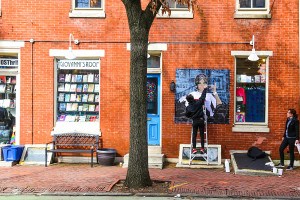Pulse: Chatter: What’s in a Name: The Branding of a Thug
So you’re perusing a newspaper story about Joseph “Skinny Joey” Merlino, and you wonder: When does a moniker cross the line from something your buddies call you to something official enough to go in quote marks between your first and last names in the Daily News? The logical guy to ask was DN crime reporter David Gambacorta, who once began a piece on a biker gang this way: “William Lees and his buddies — Death Row, Santa Claus, the Boss, Panhead, Cricket and Stone Cold — they had a hell of a thing going.”
Sometimes, Gambacorta explains, nicknames are bestowed by friends, and police and newspapers repeat them because it’s “the only name people know.” In other cases, authorities generate a nickname themselves: “The FBI puts it right on the WANTED poster. They want to fix it in our minds, so they’ll make up the ‘Chip-Tooth Bandit.’” Such dubbings run a risk, though: When dastards go by nicknames, “People root for them a little,” says Gambacorta. “They become almost like family, like that uncle with the weird striped ties.” Nicknames can also lend glamour to mundane evildoing. Jocelyn Kirsch and Edward Anderton were petty scamsters, but they had an aura of romance thanks to their DN anointing as “Philly’s Own Bonnie and Clyde.”
Gambacorta is currently reading a book on John Dillinger. “Everybody had a nickname in those days,” he notes wistfully, before perking up: “I actually have a clipping about this one guy hanging here at my desk, between pictures of my kids. His nickname was ‘Pooh-Butt.’” He pauses. “You sort of hope it was something that happened in his childhood.”


